As soon as the ball arcs across the fenced enclosure, the dog takes off after it.
The ball lands in a small plastic pool, and the pitbull, following close behind, makes an even greater splash clambering in and out of the shallow water. Her mouth practically gapes with a grin around her prize.
“Good girl, Maggie!” the shelter attendant cries out, and Maggie, tail beating back and forth with excitement, bounds back to her. As the woman falls to her knees and embraces her, Maggie abandons her tennis ball so that she can lick the attendant’s face instead.
Three years ago, Maggie’s days were spent locked inside a small, cement indoor kennel with no physical human contact. She was lucky if she was taken outside twice a week for a walk in the sunlight. The Riverhead Town Animal Shelter had labeled her a “red list” dog – dogs with behavioral issues that couldn’t be handled.
But since the North Fork Animal Welfare League (NFAWL) took over the shelter in 2013, dogs like Maggie have been given a second chance.
“There’s a difference between animal control and animal rescue,” explained Eileen Kreiling, the shelter’s new manager. “We wanted to make this a better place for the animals here. We wanted to make them happier, which will make them more adoptable.”
The Riverhead Town Animal Shelter has been the center of much controversy in recent years. Its cramped and outdated facilities, located next to a sanitation company and the now-closed town dump on Youngs Avenue, spurred the creation of an organization dedicated to raising funds to move the shelter. And prior to the League’s takeover, local activists railed against the treatment of the shelter’s animals under the town’s former animal control officer, who had a criminal record involving wildlife laws.
“There were dogs living here for two, three years with no physical contact at all,” said Ariel Reichel, a shelter staff member who also volunteered at the town shelter before it was managed by the League. “They were basically rotting in a jail cell.”
Since its takeover, however, the League has made significant improvements to the lives of the animals in the shelter, some which have been there for as long as four years.
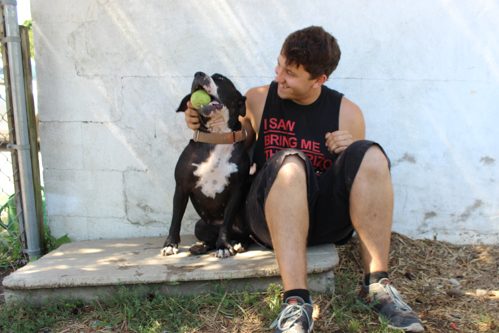
An on-staff trainer works with the dogs several days a week to improve behavior and develop individualized treatment for each animal. Basic sanitation and elevated “beds” with blankets in the indoor kennels pose less health risks to the dogs and make their overnight experiences a little easier.
And the League has doubled the amount of outdoor dog runs on the property so that, during the day, every animal can be outside, where they are remarkably happier.
Before the League’s takeover, the shelter only had the capacity to keep 11 dogs in the outdoor runs at a time. This meant dogs on the “red list” – those with behavioral issues – would never get to go outside in the pens. Instead, they would be locked in small kennels in the back half of the shelter’s only kennel facility all day long, with no where to defecate but the cement floor.
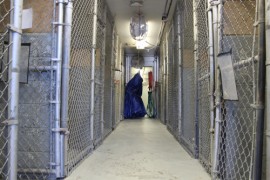
“They were lucky if they were taken out for a walk twice a week,” Reichel said.
Once a day, a shelter volunteer would hose down the kennel to remove the excrement inside. The kennels weren’t properly sanitized or dried, said Reichel, which could lead to health issues for the animals.
Maggie, for example, would salivate often due to stress. Her chest grew raw from the constant moisture, made worse by the wet, unsanitized floor and the water from the hose.
“She would get a little mouthy and nippy, so they saw it as a bad behavioral sign,” Reichel said. “But she doesn’t have a voice. She can’t say, ‘Hey, I’m stressed out. Hey, these dogs are barking at me.’”
After the League took over, volunteers and staff determined that Maggie’s poor behavior stemmed from her discomfort around other animals. Maggie is now kept in an outdoor pen during the day, away from the other dogs. At night, she sleeps in an isolated kennel in the staff room.
“There was nothing wrong with her,” Reichel said. “She just needed someone to give her a chance.”
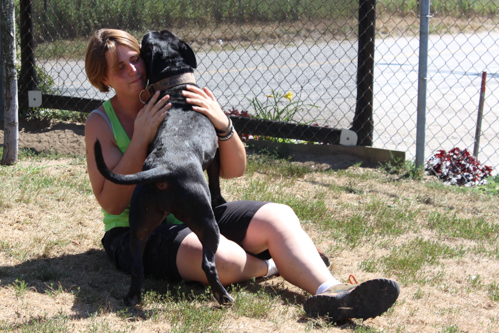
The shelter now works with each of the 14 dogs currently in its care as “individuals,” says Kreiling. Dogs that are prone to jumping are placed in outdoor runs with overheads, so that they can’t escape. Dogs that enjoy playing in water have small, plastic pools in their runs. One dog, Dallas, loves chewing on toys, so he always has access to several.
The shelter has also made changes to improve the dogs’ stress levels as a whole.
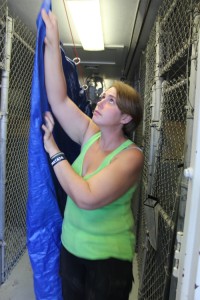
The structure of the indoor kennels, which forces the dogs to face each other across a narrow hallway, was making the animals anxious, so now staff members hang tarps in the hallway every evening so the dogs don’t have to look at each other all night long.
Marrow dog bones filled with frozen peanut butter are waiting for the dogs in their kennels each night so they have something to look forward to. The frozen peanut butter takes a while to melt, Kreiling says, so it also helps the dogs wind down before bed.
The League also built a stockade fence between the outdoor kennels and the shelter’s parking lot, which is located directly next to a road that is heavily frequented by large tractor-trailers. The dogs are now less prone to erupting into barks and howls whenever someone pulls up at the shelter or drives down the road.
But the biggest change, Kreiling says, has been the amount of socialization given to the dogs.
“When we first got here, some of the dogs that we had were pretty much deemed unadoptable,” she said. “And it’s just because they didn’t have the right kind of socialization, the right kind of training, the right kind of attention they really required.”
Every day, every dog is walked by a staff member or volunteer. The dogs are regularly given “field trips” by volunteers to places like Home Depot or the beach. The shelter’s longest-standing resident, Buster, is often treated to trips to McDonalds, where he gets a hamburger with no toppings and a cup of water with no ice.
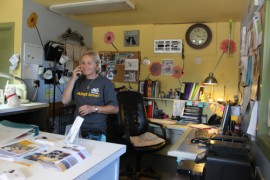
Volunteers visit the dogs and read them books or magazines as part of the League’s Read and Relax program, which helps the dogs adjust to downtime with their human companions. Dogs are brought to local events and town festivals so that they can be exposed to more people. And to help the dogs socialize with other animals, they participate every week in supervised “play groups,” which are held in the shelter’s biggest pen beside the office.
“If you don’t socialize a dog, you can’t expect it to get along with a lot of different situations and people,” Kreiling said. “It would be like taking your child, putting them in a closet and expecting them to be a social person. That’s not going to happen.”
But despite the improvements the League has made, the shelter’s facilities are still inadequate.
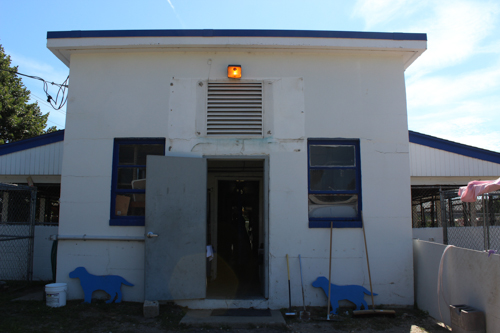
The building that houses the shelter’s office only has two rooms – a main office and a staff room, which doubles as a laundry room and an isolation unit for dogs that have just been picked up off the street.
There is no private space for potential adopters to meet and interact with a dog. There is no space to train volunteers or hold humane education classes for the community. There is no place for the shelter to house stray cats.
The shelter’s kennel building doesn’t have proper lighting or ventilation, which makes it difficult for staff members and volunteers to do their jobs.
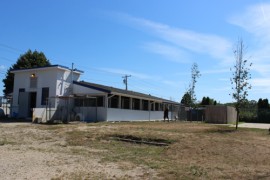
And the shelter is currently located next to a sanitation company and adjacent to the town’s yard waste composting facility, which makes mulch in the spring, and an area where the town highway department brings road kill. That means trucks are regularly barreling down the road where volunteers and staff walk dogs every day.
“It’s a very big problem for some of the dogs,” Kreiling said. “When a truck is coming, we know we have to turn them, sit in front of them, talk to them and try to take their minds off the fact that an 18-wheeler truck is going to go by them.”
Riverhead Move The Animal Shelter, a non-profit organization started by Riverhead resident Denise Lucas, has raised almost $100,000 over the past four years through a series of private donations and fundraising events. Between those funds and a newly launched capital campaign, the League hopes to renovate the Henry Pfeifer Community Center in Calverton and move the town’s shelter there in the next two years.
Until then, Kreiling says, they will continue using the current facilities to give the dogs “the best care we can give them.”
Riverhead Animal Shelter will be participating in the national Clear The Shelters event this Saturday, waiving pet adoption fees all day long to help find its dogs loving homes. For hours and directions to the shelter, visit the Leagues’ website.
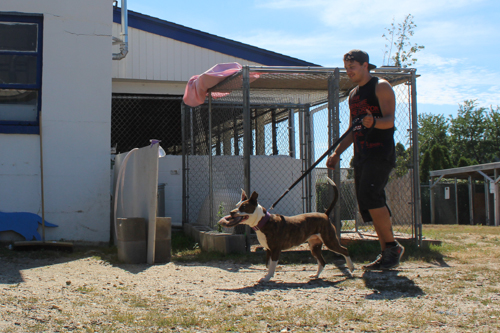
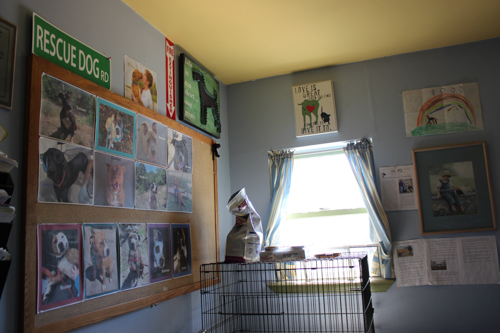
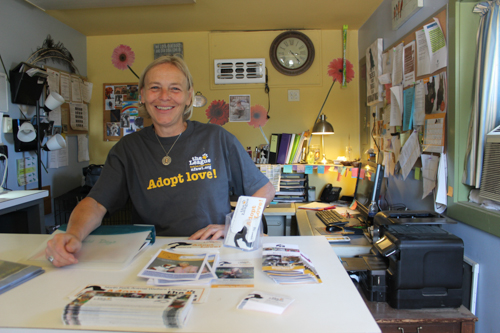
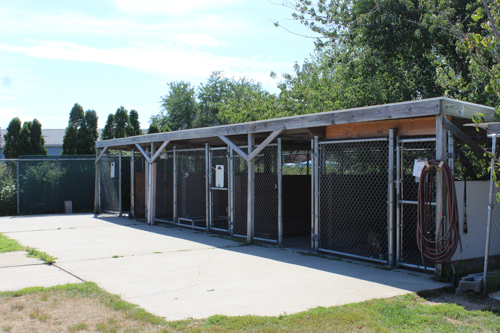
The survival of local journalism depends on your support.
We are a small family-owned operation. You rely on us to stay informed, and we depend on you to make our work possible. Just a few dollars can help us continue to bring this important service to our community.
Support RiverheadLOCAL today.
































